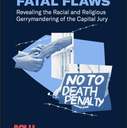
John J. Donohue (pictured), a research associate for the National Bureau of Economic Research and a professor at Stanford Law School, recently highlighted continuing problems with the death penalty system, forty years after it was struck down for being applied in an arbitrary manner. Professor Donohue wrote that despite “new and improved” statutes accepted by the Court when it reinstated the death penalty in 1976, “four decades later, there is plenty of evidence that the death penalty continues to be applied in an unfair manner and not a shred of evidence that the death penalty deters.” Professor Donohue cited a recent finding by the National Research Council, which examined all deterrence studies over the past 35 years and concluded that the studies are “not informative about whether capital punishment decreases, increases, or has no effect on homicide rates” and “should not influence policy judgments about capital punishment.” Professor Donohue also encouraged voters in California to replace the death penalty in November’s ballot. He said, “[D]espite the supposed improvements endorsed in 1976, the death penalty remains hopelessly broken… We have the chance to prevent innocent people from being executed, end the unfairness that pervades the current system, and save millions in tax revenues, all while improving public safety.”
(J. Donohue, “Time to Kill the Death Penalty?,” California Progress Report, June 28, 2012). See Arbitrariness and Deterrence. Listen to our podcast on Deterrence.


